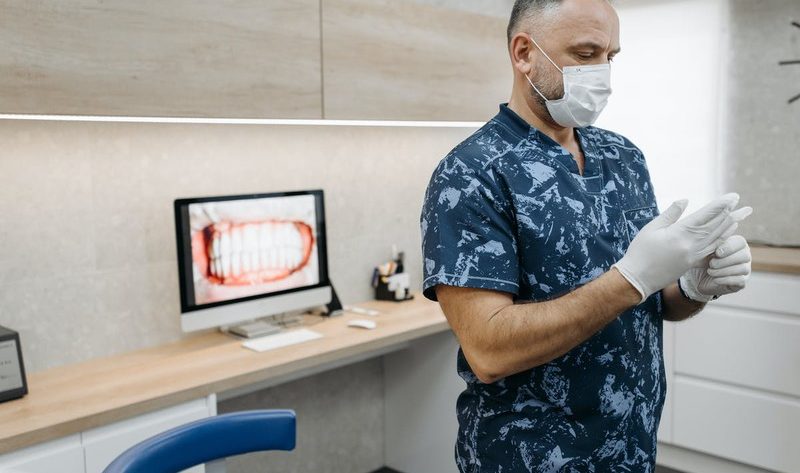When it comes to oral healthcare, choosing the right type of dental practice is crucial for maintaining a healthy smile. The world of dentistry is broad, with various fields, each catering to specific needs. Pediatric and family dentistry are often discussed among them. But what sets them apart?
This article dives into the differences between these two dental care practices and helps you determine which one might be the most suitable for your family’s dental health needs.
Defining Pediatric Dentistry
Pediatric dentistry is a branch of dentistry dedicated to the oral health of children from infancy through the teen years. It involves educational components that help children adopt effective oral hygiene habits and understand the importance of maintaining good oral health.
-
Caring for a Child’s Oral Health
-
Focusing on Preventive Care
-
Specialized Training for Pediatric Dentists
The Scope of Family Dentistry
In contrast, an expert family dentist provides comprehensive dental care for patients of all ages. This one-stop-shop approach allows all members of the family to receive dental care in one convenient location, making it an ideal option for busy households.
-
One Clinic for All Family Members
-
General Dental Services Offered
-
Long-term Relationship Building
Comparing Pediatric and Family Dentistry
While both types of dentistry focus on oral health, they have distinctive approaches and methodologies. Knowing these can help you decide the best fit for you and your family.
-
Age Range of Patients: Understanding the age range that each type of dentistry caters to is key in making your decision. Pediatric dentists exclusively cater to the younger population – typically from infancy to adolescence – while family dentists provide services for individuals across all age groups, including adults and seniors.
-
Specialized Pediatric Techniques: Pediatric dentistry employs specialized techniques designed for treating younger patients. This can include behavior management, sedation options appropriate for children, and the use of child-friendly dental equipment. These techniques generally help make a child more comfortable and cooperative during treatment.
-
Convenience of Family Dentistry: The all-encompassing nature of family dentistry makes it a convenient option for families. It eliminates the need for different dental providers for different age groups within the family, allowing for easier appointment scheduling and continuity of care over the years.
-
Atmosphere and Environment: The atmosphere and environment of the dental office can significantly impact a patient’s experience. Pediatric dental offices are often designed with playful themes to create a welcoming environment for children. On the other hand, family dentistry practices usually have a more universal design to appeal to both children and adults, focusing on providing a comfortable setting for the entire family.
Why Choose One Over the Other?
The decision between pediatric and family dentistry ultimately depends on your family’s unique needs. Each has its advantages and deciding factors that can help make the choice clearer.
1. Consider Your Children’s Needs
The specific dental needs of your children may steer you toward a pediatric dentist who is trained to handle the nuances of children’s dental health and behavior, especially if your child has dental anxiety or requires specialized care.
2. Think About Convenience
Family dentistry can simplify your life by allowing the entire family to receive care from the same provider. This can be more convenient in terms of scheduling and is ideal for busy families.
3. Evaluate the Level of Specialized Care Required
While family dentists are qualified to treat both adults and children, if there’s a need for specific pediatric dental procedures, you might opt for a pediatric dentist, or vice versa, if you’re considering services like dental implants for adults.
4. Personal Preferences and Comfort
Your family’s comfort with the dentist is paramount. Consider the office environment, staff, and the rapport each type of dentist has with both you and your children to make the best decision for your family’s dental care.
Common Myths and Misconceptions
When deciding on your dental health partner, it’s important to separate fact from fiction. Let’s debunk some common myths about pediatric and family dentistry.
Myth 1: Pediatric Dentists Can Only Treat Children
Pediatric dentists are not limited to pediatric dental procedures. At the same time, they specialize in treating children; they sometimes continue to manage the oral health of patients into young adulthood or may see individuals with special healthcare needs beyond childhood. Their expertise, though centered on the unique dental needs of infants, children, and adolescents, encompasses a broad range of care that can extend to various ages when necessary.
Myth 2: Family Dentists Aren’t Equipped for Children’s Dental Issues
Family dentists are qualified to treat patients of all ages, including children. They can address the most common pediatric dental issues and offer convenient care for families seeking a single dental care provider for both adults and children.
Myth 3: Dental Implants Are Not a Family Dentistry Service
Within the field of family dentistry, if the practitioners are adequately trained or collaborate with a specialist, services can include Bethlehem dental implants. Family dentistry aims to provide comprehensive care, incorporating implantology so that patients can access a wide array of dental services, including dental implants, with a referral system in place for more intricate procedures.
Final Thoughts
Take proactive steps for your family’s dental health today. Choose a dental care provider attuned to the unique needs of each family member. From pediatric expertise to a broad array of services, select a provider that ensures long-term, flexible care. Don’t delay—make a confident choice now for a lifetime of healthy smiles. Your family deserves the best; secure their dental well-being with the right expert today.


